A snow rabbit warily sits in the distance as I snowshoe closer to sneak a better view. The rabbit runs away before I get there, and in the meantime, I appreciate nature and all its surroundings.
Many runners don’t know that the vast majority of snowshoe enthusiasts come to the sport after first pursuing running. Questions arise all the time about the transition. For example, “I didn’t know you could use snowshoes when snow is skimpy.” Or I’ve heard, “You mean you run on those things?”
To help answer these questions, we reached out to a wide variety of snowshoers. They’ve provided ideas to help runners who have yet to don a pair of snowshoes, drink the Kool-Aid, and welcome to the addiction of beautiful forests and trails traveled quietly. In addition, their answers provided a wealth of insights that you can apply now.
The Benefits of Snowshoeing as Cross-Training
Snowshoeing allows for a fantastic cross-training option in the winter for those who run, as running has several similarities. Find the benefits and recommendations of using snowshoeing for cross-training below.
Invest In The Right Equipment
Just ask ultra runner and snowboarder Wolfgang Sterr. He’s an executive chef with Whistler Blackcomb in Canada. Sterr, an established runner, says it was an easy transition from running to snowshoeing. “I do a lot of snow running here while training.” He suggests adopting a running style, starting slow, and investing in a good pair of snowshoes.
Similarly, Weimar Gomez, restaurant owner and executive chef in Canada, says, “I’ve been running already for more than ten years; marathons, short distances, and a few crazy trails in Asia with running on the beach and rivers. With the correct equipment, it is not difficult to move to a snowshoe since the basic movements of the lower body remain the same. I haven’t competed in snowshoes, but I used this discipline to reinforce my body during the winter period and obviously bring something different to my daily sports activities. Mentally [it] is always good and motivating.”
The Beauty Of The Trails
Many athletes also enjoy the beauty of the trails. Take Andrew Woodard’s approach, a Braveheart Snowshoe Racing Series veteran. “The reason that I snowshoe in the winter is it gets you off the icy roads shared with slipping-sliding cars and onto trails with great winter scenery and a secure footing with the snowshoe crampons that grip the ice and snow. You can run down an icy slope at full speed and be confident in your footing.”
Sara Bucovaz, both an avid runner, hiker, and snowshoer in Canada, says, “If you compare it to running, it is the same. You kind of lift up your foot as you run in snowshoes. I snowshoe mainly to be outdoors but also because it is great exercise, and I can push myself a lot going uphill to the top of the mountain just like I can push myself by running hard on a tempo run.”
Edge As A Runner
Running star and World Snowshoe Federation (WSSF) champion Joseph Gray agrees. “For me, there is a natural transition to snowshoe as the snow season comes during the winter and stays put for a few months where I live. Being that it relates to cross-country, snowshoeing allows me to get in some racing in a style very similar to one of my favorite genres of distance.”
Joseph lives a professional running and snowshoeing life. Besides his WSSF titles, he also holds the USATF National Half-Marathon Trail gold medals. With those and many more, Joseph attracts sponsors such as Hoka ONE ONE, Juice Performer, Garden of Life, Club Northwest, Stryd, Amp HP, Fuel 100 Electrobites, Kahtoola, and Beyond Coastal. Of course, it doesn’t hurt that he stands as an engaging, charismatic person, too.
He continues, “Racing both activities helps my professional life. I believe happiness is the key to longevity. Snowshoeing gives me balance throughout the year and also serves as unique challenges each season, in combination with all the other running events [in which I take part].”
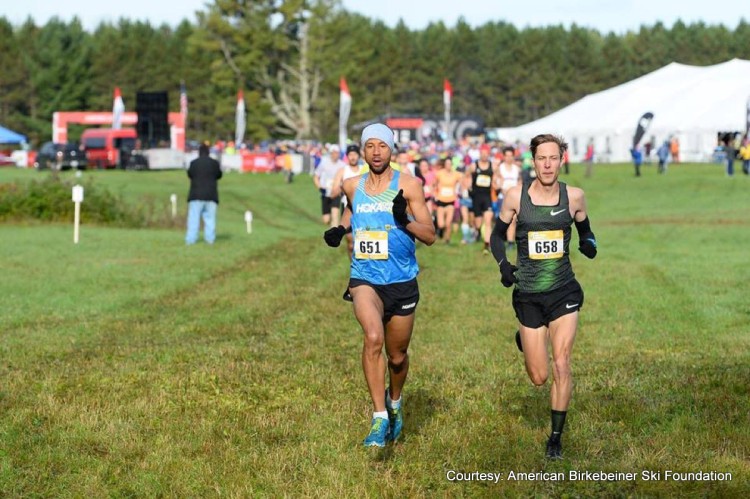
Joseph Gray (L) leads Andy Wacker for 13.1 miles winning the 2018 USATF National Trail Half Marathon Championship. Photo: American Birkebeiner Ski Foundation
Differences When Snowshoe Racing
Along with similarities between snowshoeing and running, there are differences to be aware of when transitioning to snowshoeing for cross-training.
Wider Gait
Avid Minnesota snowshoer Ron Dockery was a U.S. flag bearer in the 2013 World Duathlon Championships and competitor in the 27.5km sprint events of running/bicycling. He recalled his transition to the sport. “As a runner, pre-snowshoe, I ran with a very narrow gate, meaning my footstrike would be in-line. When I started snowshoeing, I ended up on the snow several times in a face plant due to my mindset that running is running no matter what is on the bottom of your feet. I quickly found the end of one snowshoe stuck in the front of the other, thus the face plant. I learned to take a broader footstrike. Now my face plants are as a result of trying to enjoy the wonders of snowshoeing in the woods by looking at the beautiful picture that winter paints and not watching where I am going.”
Varying Terrain
Snowshoe racing veteran, Woodward, describes the comparisons he sees with various other sports and snowshoeing. “Snowshoeing presents a challenge for most newcomers as the technique is slightly more awkward than simply running one foot in front of the other. You also have to deal with varying terrains and sometimes deep snow, which can be frustrating for rhythm runners…”
However, “…most strength runners specializing in mountain running will enjoy the variations in terrain. Cross country runners who love tough courses will find that snowshoeing is very similar; close, except with more vertical change typically. Of course, this is a great thing if you do better on the muddy or hilly courses.”
Perhaps you’ve never gone off-road to run. You may harbor fears of the differences in terrain from pavement to wooded paths, trails through open fields, or even following dirt roads. Richard Bolt, the 2017 Cindy Brochman Memorial Snowshoe Magazine Person of the Year, offers these tips through the American Trail Running Association: “8 Trail Running Tips: How to Get Started.”
More Lift
Jim Tucker, known as the Dean of Fun at Paul Smith’s College, notes, “Whether running on the wooden snowshoes back in the day or on the much smaller, narrower (key to avoiding banging the ankle bone) and lighter snowshoes, there is a wonderful cadence that develops while training and racing on snowshoes.”
He continues, “Snow is a forgiving surface. [W]hen running or jogging on a groomed surface, the cushioning of the snow requires a greater lift from your hip flexors than distance runners are used to. When running through powder, these hip flexors and hamstrings can really get a workout”.
Finally, “One of the first things I will point out to anyone who is putting on snowshoes for the first time, recreationally or training/racing, look at the flex point of the snowshoes and use this as a guide on where to place the ball of your foot. There are generally two rivets or a hinge rod at the pivot point of the snowshoe for your foot. You want the ball of your foot to freely pivot at the flex point of the snowshoe, and your toes will readily flow down through the open space of the snowshoe.”
A snow rabbit rests in the far distance, but as I try to snowshoe closer for a sharper view, the rabbit tracks away effortlessly, its snowshoe footprints imprinted in the snow. I marveled at the rabbit’s speed and wished to be as fast.
Get Ready for a New Sensation
Even if you are already a runner, trying on snowshoes for the first time can be intimidating. Here are a few suggestions for trying to get started.
Try Out A Clinic
Across the U.S. and Canada, many resorts and national parks will offer snowshoe clinics for first-timers or more advanced snowshoers.
At Grouse Mountain in North Vancouver, Canada, the snowshoe team opened up about their clinic and success stories. “We have a variety of snowshoe clinics available for various ability levels and interests, from Beginner or Baby and Me clinics right up to competitive training. You can sign up for a specific 4-session clinic. Or we also offer a twice-weekly drop-in night that offers more flexibility.
Our drop-in Snowshoe Social Nights are open to all levels of ability. Participants are grouped in similar ability levels by our snowshoe guides before heading out on their adventure. You can enjoy anywhere from a leisurely stroll to an active workout.”
At Grouse Mountain, “Some of our most successful and memorable tours have taken place with groups that have never experienced winter conditions. To take guests that have never seen snow and tour them around the alpine area and see their reactions to the environment and throwing their first snowball is always memorable. We have also had some really great nights on our Snowshoe Fondue and New and Full moon tours that we offer.”
Read More: No. 9 Snowshoe Friendly Snowshoe Resort: Grouse Mountain, BC
Go With Others
As an alternative to clinics, Andrew Woodard, Braveheart Snowshoe Series racing veteran, suggests, “I would recommend just getting out and finding some friends who would also like to try something new and partake together.” Trying out a new sport with those closest to you can be an unforgettable adventure in itself!
Snowshoeing can also be done at any time, day or night. “Snowshoeing at night is, I think, probably one of the most awe-inspiring things you can do. The stars are like beacons in the night sky, and the sheer lack of noise is amazing. I recall ‘shoeing at night on a local golf course (with permission) with my headlamp on, and I looked out over the course, and far away was a faint light coming towards me. I continued, and as the light got closer and closer, I soon found myself in the middle of nowhere talking to Braveheart Jim McDonnel and his dog.”
He continues, “What a great experience. We both laughed and went a bit further, enjoying the night and laughing about the fact that we were both nuts for being out there while enjoying the art of snowshoeing. I guess the point of this is that there is more to snowshoeing than just the effort. You meet a select group of people who are all so nice and have at least one thing in common. I have never met a snowshoe athlete who is nothing less than accepting and an instant friend. I guess we are all a little bit crazy but in a fun sort of way.”
Running Teams
One team of runners is the notable snowshoe racing team from Paul Smith’s College, started by Jim Tucker.
Tucker, still known as the Dean of Fun at Paul Smith’s College, devotes much of his time to fun in the outdoors. From the family potato farm in Gabriels, New York, and as an Eagle Scout, he received an education that has let him devote his life to endurance athletics. He has participated in running, snowshoeing, cross-country skiing, duathlons, triathlons, swimming, and canoeing. As a kid snowshoeing became his way to get to the big hill where kids rode a toboggan. He explored the frozen woodland swamps above the mud and water and began to understand wildlife.
The Boy Scouts had an annual Klondike Derby, and there were different variations of the snowshoe race or relay from year to year. “Even as an 11-year old Tenderfoot, I was the most skilled and fastest kid in Troop 12 on snowshoes due to the time I had put into the utilitarian footwear as a matter of choice. I was 13 or so; there was an annual snowshoe race as part of the Saranac Lake Winter Carnival, held at the Saranac Lake Fish and Game Club,” which he won.
“It was not until 1987 when I got to Paul Smith’s College that I discovered aluminum-framed snowshoes. I saw that snowshoeing had become a part of the annual Empire State Winter Games, and once I got to Paul Smith’s, I immediately started the Paul Smith’s College Striders. This endurance training and racing organization were coordinated through Student Activities. We headed to road races, bike races, trail running events, marathon canoe races, and multisport events in winter, spring, and summer.
Teammates Starting As Runners
As Tucker mentioned, “Most of these kids have never been on snowshoe before coming to Paul Smith’s College, but they are generally cross-country runners, high school track runners, soccer players, or Paul Smith’s College rugby players before we get to snowshoe racing season.”
“Our racing season is really short due to the month-long break between semesters. We hold the Jingle Bell 5K snowshoe race the second Saturday in December, and the students immediately have final exams and head home. The runners depart with their snowshoes, but many reside where there is little to no consistent snow. These kids are at a disadvantage for training, as I bring them back to campus on the third Thursday in January, and we head to snowshoe races for Saturday and Sunday leading up to the start of the spring semester.”
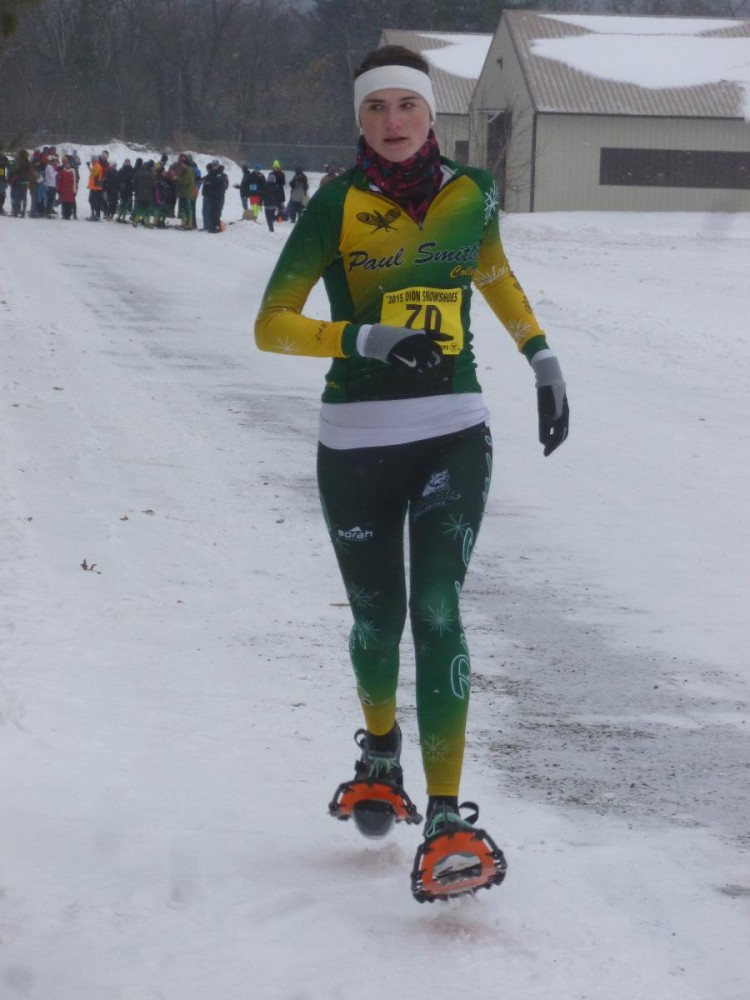
Chloe Mattilio on the Paul Smith’s College Snowshoe Team at the 2015 Eau Claire USSSA National Championships. Photo: USSSA
Remember to Dress for Success
For any running in the winter season, it’s essential to dress for success. Practice these tips to be well prepared for your next snowshoe race.
Avoid Overdressing
Runner and executive chef Weimar Gomez says, “I think one of the most important things to do when we practice in snowshoes is to maintain the right temperature of the body; we quickly feel hot when running, especially if we over-cover (dressed). Once we finish, it is important to maintain warmth until the time we can change. Hydration is important as in summertime, and some gels to support energy are also suitable. We spend more energy in cold days, especially in the first minutes when the body uses that energy to fight against the conditions.”
Dean Tucker says, “I see new snowshoe runners with too many clothes on at the beginning of a training session or race. If you are warm when you are getting started, you are going to overheat.”
Appropriate Gear
Whereas fleece jackets and pants were quite popular a couple of years ago, there is nothing better to enhance looking like Frosty the Snowman than training or racing in fleece. Outer garments must be designed to allow any snow kicked up to fall back off the garment immediately.
Read More: Snowshoeing Dress Code: What Clothing To Wear
Footwear
You can wear the same running shoes for snowshoeing as you do on the summer roads. In addition, you may choose to wear a waterproof and breathable trail running shoe for snowshoe training. Regarding actual snowshoes, racing snowshoes are recommended as they are shorter, narrower, and lighter.
Running gaiters can prevent the snow from sticking to the socks. They can also prevent crusty snowballs from falling into the shoes behind the heel. Also, and most importantly, melting and creating wet feet.
Some sock fibers seem to attract snowballs. If these snowballs remain, I’ve seen runners Achilles rubbed raw during a snowshoe race. Wool clothing is a wonderful fiber. However, snowshoe training and racing will result in snow bonding to the wool socks at the ankles.
Read More: Snowshoeing Footwear: Tips for Choosing Your Boot
Handwear
For most athletes, thin gloves will be fine most of the time. However, I had found that a Gore-tex over-mitt was advantageous when the temperatures were below zero. These are lightweight, so if my hands did get too warm, I could take them off and hold them like a running baton for the remainder of the race. There is also the advantage of putting them back on if the wind conditions warrant it.
Eyewear
Sunglasses make you look cool and are designed to protect your eyes. The sunglasses allow you to see the contours of the snow surface much better. When racing or training with friends, they can protect you from the snow chunks that get thrown up from their snowshoes. They can also protect you from low branches that might generally be above your head, but the limbs are lower due to the weight of the snow. Also, with the snow under your feet, you are physically higher on the trails during the winter.
Prepare for Changing Conditions
Having an entire set of dry, comfortable clothes to put on is lovely when you finish your workout or race. As Dean Tucker says, “I work with 18-to-22-year-olds, and whether working with them in early season marathon canoe training or anytime with snowshoeing, I strongly encourage them to bring along an entire set of warm, dry, comfortable clothing”.
For the first 15 minutes after your training or racing, you will be warm or hot and feel euphoric. Once you have done your cool down, encourage your fellow athletes, then rehydrate and get into dry clothing from the base layer outward. Being dry, warm, and rehydrated after spending time running through the woods feels excellent.
Also, I retain over a dozen hats and generally bring along a couple of hats to work each day, knowing conditions will change.
“Under more seasonal conditions, running tights or loose-fitting snow-shedding training pants are more appropriate. If it is truly cold and windy out, then having a wind block layer on the front should be considered. By cold, I am referring to below zero (F), or if it is breezy and ten above.”
Snowshoe Racing for Medals
Dean Tucker talks about how “Our season concludes with the DION USSSA National Championships, so we compress several races in a seven or eight-week time span. [Therefore], I have to rely on the students to train as efficiently as they can over the month-long holiday break. [T]heir training [during break] can result in solid performances during the seven-week season. These kids are young, so we frequently seek out races on Saturday and Sunday. So they can race in two different locations on back-to-back days. This [schedule] requires that they learn to rehydrate properly, [and] pack sufficient dry clothes. [They] learn the value of a boot dryer, seek proper sleep, and learn to train efficiently”.
Sign Up For A Snowshoe Race
Dean Tucker’s advice, “Go to a snowshoe race, pay the entry fee, and rent a pair of loaners for the event. Talk to your fellow athletes before and after the event, and share contact information. There are plenty of snowshoe manufacturers making good training and racing snowshoes, and the snowshoe world is quite friendly. Try on several models before buying a pair. Before long, you may have two or three pairs. [E]ach model [will be] servicing specific conditions like packed trails, icy conditions, or powder snow.”
Scott and Sarah Gall own The Runner’s Flat in Cedar Falls, Iowa. Scott won the 2015 USSSA National Championship raced in Eau Claire, Wisconsin. Both have earned spots on the U.S. Snowshoe National Teams. Scott said, “I find that as long as the grass is covered completely, snowshoeing is a fun adventure. And thinking of snowshoeing as an adventure is a great way for persons to enter the sport with enjoyment and confidence.
Read More: Training Tips for Snowshoe Racing: Triathlete Brad Zoller Hits The Snow
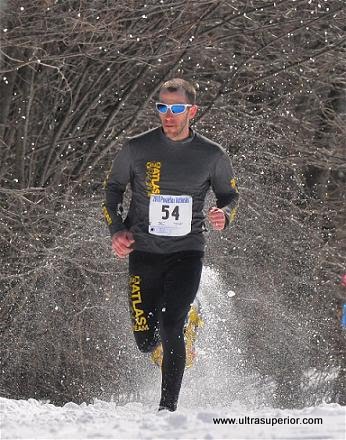
Scott Gall at the 2010 USSSA National Snowshoe Championships, New York. Photo: Utrasuperior, Phillip Gary Smith
Go For Time
Scott continues, “Just like any other cardio activity, I encourage people to go for time, not distance or pace. The first couple of times, I encourage them to simply hike a little, run a little, and get used to them. Once they have found some rhythm, walking or running slowly for extended periods will offer them the chance to enjoy the magic of snowshoeing in the snow, in the outdoors, in the quiet peacefulness of winter.
The mistakes we’ve seen have been people trying to go at a pace way too fast or a distance way too long without giving the activity the appropriate respect it deserves. Realizing that they are running through the snow with two oversized shoes, weighing one to four pounds, attached to their feet, should help them also remind themselves to take it slow and enjoy the activity in its breathtaking scenery and not the speed or distance with which they are moving.
Ron Dockery further says, “I also learned more about pacing than I could ever do running. It took a mindset change for me to understand that if you go out on your shoes at the same pace, you normally run, flame-out is inevitable, and you end up looking like you are running in post holes.
Start Slow
Scott and Sarah mention, “We also encourage them to go for short amounts of time for the first few times they go. [For example], only go once or twice a week [for] cross-training or a portion of their run workout one day. But not suddenly snowshoe every day and not run or do other types of workouts they are used to. Adjusting slowly to the physical demands of snowshoeing is highly recommended. Overdoing any type of new physical activity is usually never good.
Finally, I encourage those who want to race snowshoes to still only snowshoe once or twice a week. Staying in good 5K or 10K shape is far more beneficial than running hard and slow on snowshoes five days a week and losing your turnover rate and speed. I like to do one workout and one easy run a week on snowshoes. [T]hen keep the other runs as normal runs so that I am ready for all snowshoeing conditions, whether that be fast-packed groomed trails, single track, hills, powder, or any combination of these. Those that overdo the snowshoe training seem to be able to snowshoe forever but don’t seem to be able to do so as fast as those who are still a well-rounded endurance athlete.”
The rabbit’s tiny feet, though large in proportion, handle the snow or trails, adapting to the weather; such a marvel of Nature. We deflect weather’s blustering if dressing appropriately, sporting appropriate gear, leaving our prints in the snow much like the rabbit. Oh, the joy, the freedom in space and time.
Read More: Building and Maintaining Endurance All Year Long for Snowshoeing
Go Mental
Standing in the buffet line at the USATF Minnesota Awards Celebration, I turned and met Female High School champion Julia Fixsen. Winning her award through the sport of pole vaulting, I asked what the biggest challenge was for her. I expected an answer dealing with physicality, maybe hanging on as the pole slings her over the bar or how to release to avoid the crossbar. But, nope, none of that. Instead, her answer revealed why she is a champion: “It’s mental.”
One of the most Influential movie directors ever, Steven Spielberg, once answered the question, “What is the hardest part of making a movie?” with this reply: “Getting out of the car.”
Maybe you have felt that emotion when arriving at a competition. There can be a tough mental block, whether running, snowshoeing, or a race of any other type. But, you overcome the mental block you established in the first place and edge yourself right to the start line.
Overcome the same block that stops you from zipping on a pair of snowshoes for a race, fun, or training. Engage that muscle on top of your head. Use your brain to overcome the anxiety of the unknown.
Refresh your racing repertoire with running snowshoes. Doing so will channel your inner rabbit.
What other recommendations do you have for transitioning to snowshoe racing? Share your thoughts with us in the comments below.
This article was first published on March 5, 2019, and was most recently updated on January 3, 2022. INXS “New Sensation” written by Andrew Farriss, Michael Hutchence
Read Next: Don’t Stress Out: Pre-Race Anxiety Tips

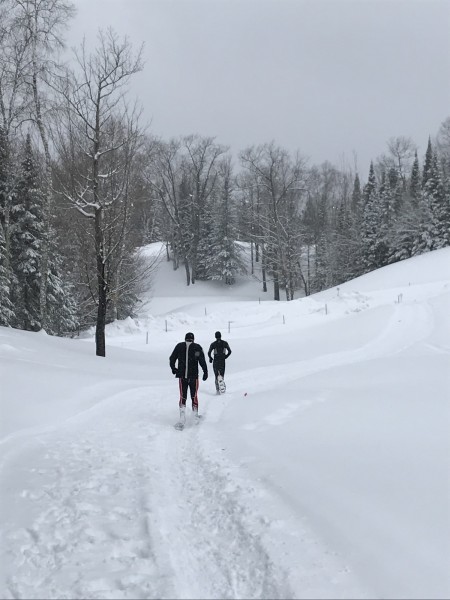
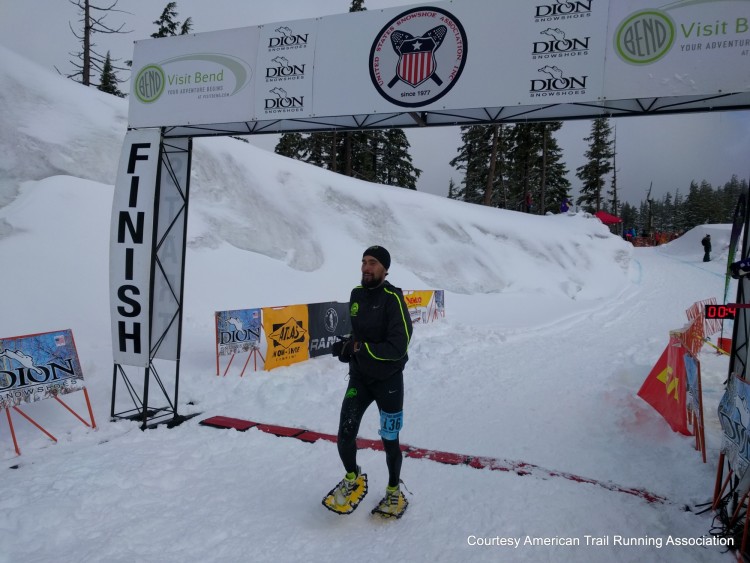
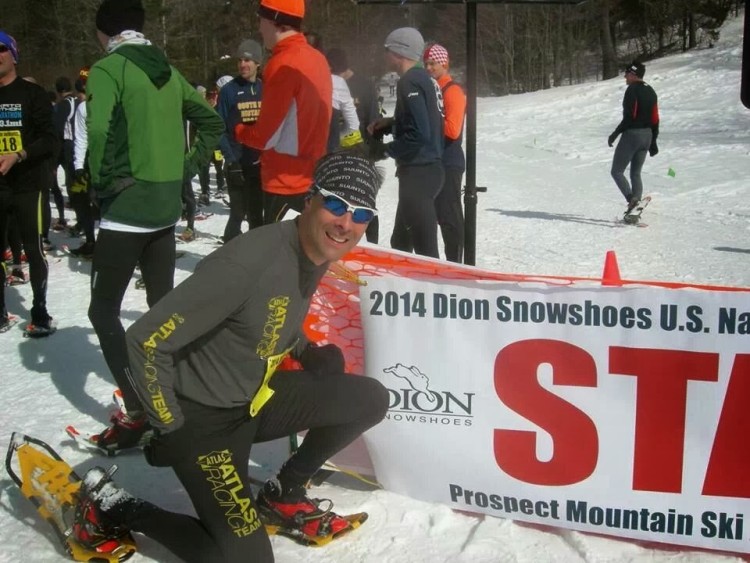
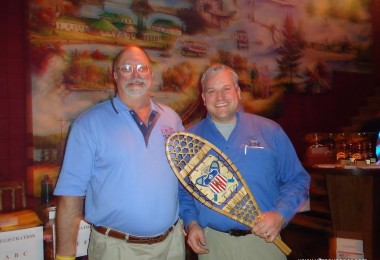
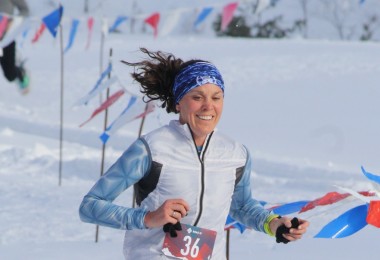
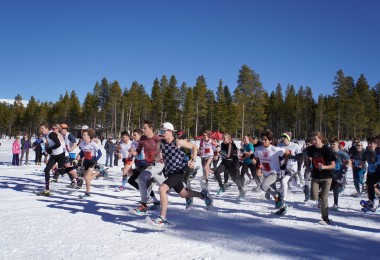
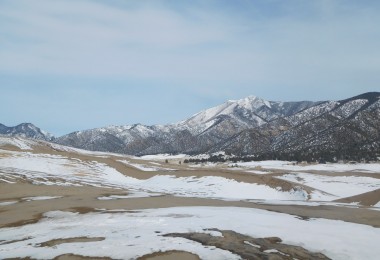

Leave a Comment